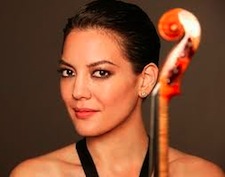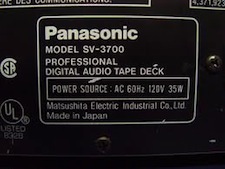It’s the time of year for saving money!

It all started when I read a review I’d done back in 1997. The review of a Carver AV-705x five-channel power amplifier was in the defunct Stereophile’s Guide To Home Theater Summer issue. In the body of the review I mentioned a recording of Sibelius Violin Concerto with Anne Akiko Meyers soloist that J. Gordon Holt and I made in 1996 on Sony D-8 DAT machine. Now for those of you who’ve never seen a DAT recorder, they were the first professional one-piece recorders that used tape in small dedicated cassettes, called Digital Audio Tape, hence DAT. The DAT bit rate was 48/16 (except for a few consumer machines such as the Pioneer D-05 which used a “double-speed” methodology to make 96/16 DATs that could only be played back on that machine.)
The reason this recording caught my attention was that I just completed the editing on my most recent DSD recording of, you guessed it, the Sibelius Violin Concerto. My latest recording was done with the same microphones in approximately the same position, in the same hall, with the same orchestra, but a different soloist, different microphone preamps, and a different recording chain. The audiophile in me wanted to know just how similar and how different the two recordings would sound. Had my recording improved during the intervening sixteen years.

The only way to compare these two Sibelius recordings was to listen to both on the same system. Easy right? Well, not really. The 1996 recording was made on a DAT, which may be a digital medium, but it is not “plug-compatible” with my current digital gear. Why do I call it not compatible? Because, there’s simply no easy way “one-step” way to transfer digital data from DAT to computer. You can’t merely copy an entire digital file, because the DAT does not produce individual files like a modern recorder. Instead it has a continuous stream that may have markers to delineate tracks, but not individual files. To copy a DAT you must play the DAT and record the output, into another device. The easiest way to do this would have been an SPDIF output from my Technics SV-DA10 (the consumer version of a Panasonic 3700) to a Lynx HiLo and then into my computer. But the physical location of my DAT made this solution impossible. So, my solution was a bit more old-school.

Since I couldn’t directly tether my DAT recorder to my computer, I chose to use the intermediary step of transferring the DAT to a CDR and then using the CDR to transfer the data into my computer. To accomplish this I pulled out my old Pioneer PDR-555RW CDR recorder. When I had connected the cable from the SPDIF output of the DAT player to the digital input of the CDR recorder I thought I was all set to record, but I was wrong. Upon pushing “record” I was greeted by the dreaded “Cannot Record” error message from the CDR recorder. WTF?
After a head scratch or two I remembered SCMS. This stands for “serial copy management system.” SCMS as the first digital copy protection scheme for consumer digital audio. It prevented consumers from making a digital copy from a digital recording. All consumer CDR recorders, including the PDR-555RW, had SCMS enabled. When I tried to copy my master DAT the Pioneer CDR recorder sensed the SCMS code that was imbedded in the DAT recording and refused to make a copy.

But back in the day there was a way to strip out the SCMS code from DATs or CDRs that was well-known to most recording engineers. It was called the Audio Alchemy DTI. This early jitter-box was created primarily to lower the jitter between a CD transport and a DAC, but the side-benefit of stripping out the SCMS code was the reason that J. Gordon Holt and I had several which we used primarily when we had to digitally copy our DAT and CDR recordings. I still have mine.
After connecting the DTI between the DAT machine and the CDR recorder the “Cannot Record” message vanished and I was able to make my digital copy without a hitch. Thank you, Audio Alchemy.
The next step was to put the finalized CDR into my MacPro’s CD tray and copy the files into my computer. After moving the files I opened the Korg Audiogate program to edit and title the tracks, and finally put them into 44.1/16 data files.

What did I find when I loaded the first movement of both recordings into Audirvana Plus and began listening? The largest sonic differences were in the hall sounds and trailing musical information. The 1996 recording descended into digital blackness far sooner than my two-week-old DSD recording. Macky Auditorium sounded smaller, darker, and less resonant through the 44.1/16 DAT transfer. The second major difference was the overall soundstage size and dimensionality. The DSD recording was both wider and deeper than the DAT. Each instrument on the DSD recording had a degree of three-dimensionality that the DAT lacked. It’s not that the DAT recording lacked depth completely, but the depth was far less specific and multi-layered than the DSD.
The takeaway from my listening session was that, yes, the quality of my live digital concert recordings has, fortunately, improved during the last sixteen years. And while I wouldn’t be so bold as to make the blanket statement that ALL digital recordings have improved since 1996, it’s quite obvious to me that the gear I have at my disposal in 2013 is unquestionably better than what I used in 1996. And I suspect the same is true for 99% of the recording engineers working today.





